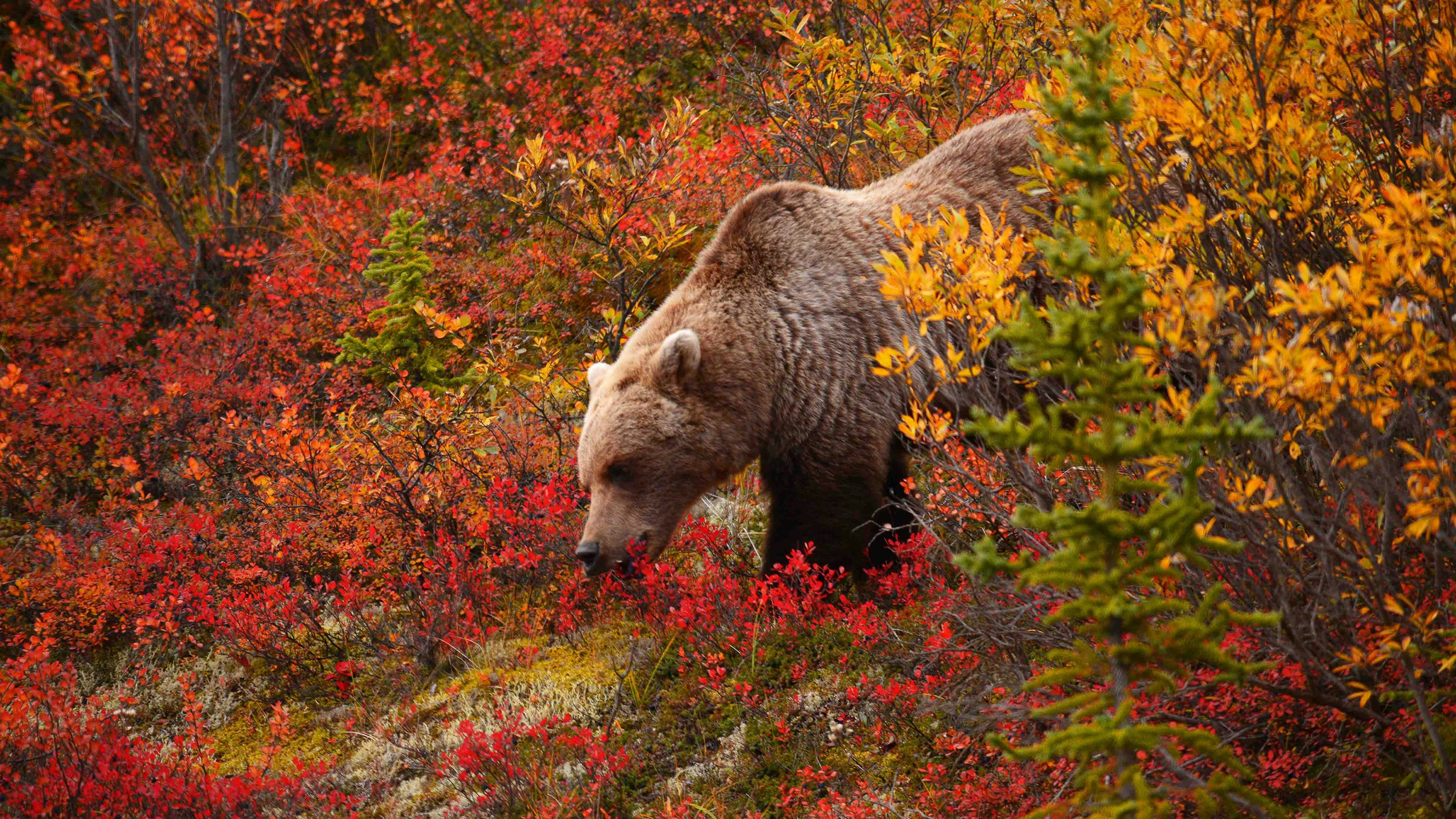Grizzly bears’ instincts are pulling them inexorably toward places where they haven’t been seen in more than a century, places where many people never expected to see them again.
And the land has the biological carrying capacity to welcome their return in many cases.
But how far grizzlies end up expanding their range hinges on the “social carry capacity,” or just how willing people are to adjust to once again having such a magnificent and daunting apex species as neighbors, a leading wildlife conservationist told Cowboy State Daily.
“Modern ecology focuses on social carrying capacity. It’s not about how many bears the ecosystem can support. It’s about how many of them people are willing to support,” said Danny Kinka, senior wildlife restoration manager for the American Prairie conservation group in Montana.
An American Prairie trail camera recently captured a photo of a grizzly bear lumbering though a parcel of the group’s property in eastern Montana’s Missouri Breaks country, about as far east into the plains regions as the bears have ventured so far.
Wyoming Wants State Management
In Wyoming, grizzlies have been pushing southward out of their core habitat in the Greater Yellowstone region, venturing into the Wyoming mountain range and the upper Green River Basin.
Some residents there echo Kinka’s sentiments about human tolerance being the deciding factor in determining just how far the bears will go.
“There’s a big part of me that loves the idea of having grizzly bears and wolves on the landscape. But the key is, they have to be managed like any other species,” Mike Schmid of La Barge told Cowboy State Daily. He’s an avid hunter and former member of the Wyoming Game and Fish Commission.
Hunter and mule deer conservationists Zachary Key of La Barge agreed that the only way grizzlies will be welcomed back into the region is if they’re delisted from federal protection and managed by the Wyoming Game and Fish Department.
“That’s what everyone wants,” Key said. “Everyone was bummed when the litigation came in and shut it down two days before the grizzly hunting season opened (in 2018). I know the Game and Fish wants to manage the bears, and they have spent north of $60 million managing them for the past 30 years.”
It would only be fair, considering the part Game and Fish played in bringing grizzlies back, Schmid said.
“I think the grizzly bear would be more accepted by people on my side of the fence if people know they could be managed by the state,” he said. “And Wyoming Game and Fish deserves to manage the grizzlies. They’ve done an excellent job of restoring the species.”
East In Montana, South In Wyoming
Grizzlies originally were a Great Plains species. In Montana, they’ve been increasingly reclaiming the prairies, pushing east out of the core mountain wilderness habitat of the Northern Continental Divide region.
“The bears seem to be trying awfully hard to get back to where they used to thrive, which according to historical records, was eastern Montana,” Kinka said.
And that’s been an adjustment for the human population.
“For a lot of people, it’s something new. It’s not something that people have had to deal with in a few generations,” he said.
Living next to grizzlies isn’t too difficult, “but it’s not effortless,” Kinka said.
Folks in eastern Montana have had to get used to things like properly storing things that might tempt grizzlies, such as garbage or dog food. And hunters going into the Missouri Breaks have had to start carrying bear spray.
In Wyoming, the movement has been mostly southward from grizzly grand central in the rugged and remote Yellowstone area, and down the arms of the Wind River and Wyoming mountain ranges.
Grizzlies might next set their sights on the seemingly impossibly vast flatlands between the mountain ranges.
Schmid said there have been reports of grizzlies coming into bear bait stations set up by black bear hunters in the Wyoming range.
Key said he’s heard about a steady stream of grizzly sightings, and it’s starting to put people on edge.
“It's definitely happening already,” he said. “Mainly above Big Piney in the Wyoming Range. There are normal sightings of grizzlies on a regular basis. Right above La Barge in the Wyoming Range.
“We have also had sightings on Deadline Ridge, which truly isn't far from town, maybe 30 minutes away. It is constantly talked about among the locals, wondering when the management decision will be made, because we can all see the grizzly encroachment happening. The locals are not happy about the new visitors.”
Don’t Force It On People
The long-term outlook for grizzlies in new territory could rest on whether people think the bears are being forced upon them, Kinka said.
That lesson can be gleaned from the fallout over the reintroduction of wolves into Yellowstone National Park. Kinka said he began his career in wildlife research as a technician on a wolf study team in Wyoming’s Grand Teton country.
Wolves were reintroduced in the mid-1990s, and controversy still swirls around them today because of widespread sentiment that the predators were forced on locals, he said.
“It just never dissipates. You can go into community halls in Montana and Wyoming today and hear the same conversations they were having in 1997,” he said.
With the grizzlies in eastern Montana, there has been more acceptance because the bears are coming back all on their own, rather than being reintroduced by a government agency, he said.
“Those hard reintroductions (of apex predators) just cause a pendulum swing. That pendulum never settles. These arguments just go on forever,” Kinka said.
Schmid and Key said giving the Wyoming Game and Fish jurisdiction over grizzly bears would help people in the Cowboy State feel vested in bear conservation.
Kinka agreed that giving the locals a sense of agency, rather than having decisions made for them by distant federal officials, greatly increases the bears’ odds of thriving on their old prairie stomping grounds.
“On the ground, if that’s your place, your ranch, your backyard, can you live with this?” he asked. “How important is it to you for this to be that ‘forever frontier?’”
Mark Heinz can be reached at mark@cowboystatedaily.com.





